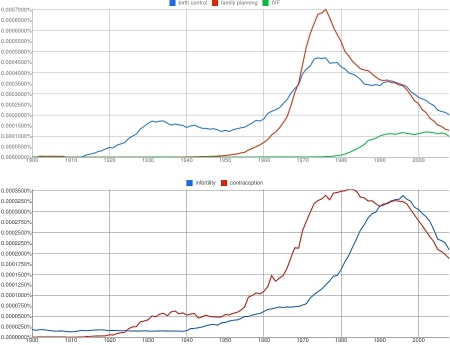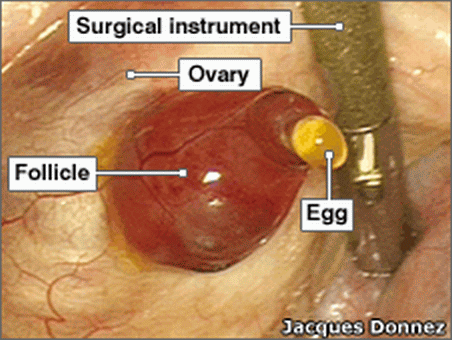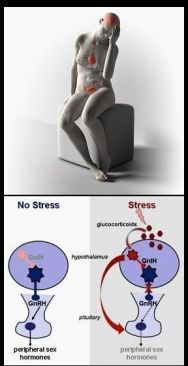Ovulona™-related published scientific findings by others about disruption of fertility, about PCOS or Poly Cystic Ovarian Syndrome, how stress suppresses ovulation, about the hypothalamic amenorrhea of stress and postpartum blues/depression, about a CRH placental clock which determines the length of gestation and the timing of parturition and delivery, and the role of CRH in premature labor. How old age affects folliculogenesis as a stressor. Even how acute stress may induce ovulation in women.
This is an update in May 2012 on scientific literature reviewed in biozhena.wordpress.com/2007/12/27/ For an easier read (as opposed to the excerpts from scientific papers) you may want to go to Stress and Your Fertility at http://natural-fertility-info.com/stress-and-your-fertility.html but Hethir’s article does not refer to the Ovulona™. It simply tells you that stress has a negative effect on your chances of getting pregnant.
Unlike in the 2007 blog post, in the present update I share the complete abstracts of publications (way further down), pointing out in the abstracts certain details by bold font highlighting. On occasion I also point out in bold italics after the given abstract how the paper relates to the bioZhena project and the Ovulona™ personal monitor.
But first, I offer summary comments on the relationship of given papers to the bioZhena project, along with some details excerpted from the abstracts. Search result item numbers are indicated – so you can correlate my summary with the full abstracts and references shown below (after the Alfons Mucha picture).
In March 2018 I am adding here for reference the links to the page on the Ovulona (as updated in 2017)
https://biozhena.wordpress.com/2007/12/11/the-ovulona/
.
For the latest bioZhena Weblog post (as of June 2019) on Stress And Fertility, Fertile Window, Ovulation, go to https://biozhena.wordpress.com/stress-and-fertility-fertile-window-ovulation/
.
Now to the subject of the present post, the review of Ovulona™-related scientific findings published by others, which suggest possible women’s healthcare applications of the technology:
Item 16:
This paper is suggestive of the prospective diagnostically beneficial use of the Ovulona™ in the management of PCOS [Poly Cystic Ovarian Syndrome], expected to be possible due to PCOS-caused alteration of the cyclic profile (detected via the exocervix, as the cervix monitors the integrated effects of all the hormones).
… effect is mediated by the hypothalamus, as evidenced by similar LH release in response to exogenous GnRH. This may represent the physiological condition that underlies ovarian follicular cysts.
Item 22.-related:
By emphasizing the critical timing of stress, this paper points by implication at the importance of routine Ovulona monitoring of Folliculogenesis In Vivo™, particularly for assisting women who have difficulty to conceive but also for those practicing natural birth control. In either case, detecting any delay of ovulation is crucial.
The effects of stress on reproduction depend on the critical timing of stress, the genetic predisposition to stress, and the type of stress. The effect of stress on reproduction is also influenced by the duration of the responses induced by various stressors. Prolonged or chronic stress usually results in inhibition of reproduction, while the effects of transient or acute stress in certain cases is stimulatory…
Item 43:
This paper is related to our finding of delayed ovulation in some of the experimental subjects of two pilot studies of Ovulona™ prototypes – an important and unique feature of the Ovulona monitor, considering our way of life, full as it is of stress and not only stress of the psychological kind.
… findings support the hypothesis that stress-like increments in plasma cortisol [= increasing amounts of cortisol in blood] interfere with the follicular phase by suppressing the development of high frequency LH pulses, which compromises timely expression of the preovulatory estradiol rise and LH and FSH surges.
Item 67:
Again, the listed paper is related to the PCOS problem, as is the next publication.
A follicle becomes cystic when it fails to ovulate and persists on the ovary. Secretion of GnRH/LH from the hypothalamus-pituitary is aberrant, which is attributed to insensitivity of the hypothalamus-pituitary to the positive feedback effect of oestrogens. Altered metabolite and hormone concentrations may influence follicle growth and cyst development.
You will see below, in the full abstracts of the papers, that the reported experiments could not be performed with human subjects, and the last two abstracts selected from the veterinary literature search state the following.
Item 101:
Imposition of an experimental stressor suppresses GnRH/LH pulse frequency and amplitude. It is not yet clear whether delays in the surge are caused by interruption of the oestradiol signal-reading phase, the signal transmission phase or GnRH surge release. [Note: oestradiol is British spelling of estradiol, the most predominant form of estrogen.]
Item 102:
Glucocorticoids are vital to many aspects of normal brain development, but fetal exposure to superabundant glucocorticoids can result in life-long effects on neuroendocrine function. … Precise levels of glucocorticoids are required for proper gonadal function; where the balance is disrupted, so is fertility.
What follows now is an analogous summary of the subsequent search on human (as opposed to animal) female fertility and stress.
Reviewing the few full abstracts with references, below, is highly recommended.
Item 3:
… These effects are responsible for the “hypothalamic” amenorrhea of stress, which is observed in anxiety and depression, malnutrition, eating disorders and chronic excessive exercise, and the hypogonadism of the Cushing syndrome. … Reproductive corticotropin-releasing hormone is regulating [those] reproductive functions [that have] an inflammatory component, such as ovulation, luteolysis, decidualization, implantation, and early maternal tolerance. … Postpartum, this hypercortisolism is followed by a transient adrenal suppression, which may explain the blues/depression and increased autoimmune phenomena observed during this period.
Item 3.-related:
Acute stress may induce ovulation in women. … acute-stress-induced release of LH is found under relatively high plasma levels of estradiol. … Women may be induced to ovulate at any point of the menstrual cycle or even during periods of amenorrhea associated with pregnancy and lactation if exposed to an appropriate acute stressor under a right estradiol environment.
Item related to the above:
The stress system has suppressive effects on female and male reproductive function. Corticotrophin-releasing hormone (CRH), the principal regulator of stress, has been identified in the female and male reproductive system. … It has been suggested that there is a “CRH placental clock” which determines the length of gestation and the timing of parturition and delivery. … animal studies to elucidate the role of CRH in… premature labor.
Two literature search results – whereby I consider old age to be a stressor – are noted (with only certain excerpts from the abstracts) at the end of the post, consistent with the previously proposed motto: Be a young mother!
Hints for why – WHY TO BE A YOUNG MOTHER (besides coping more easily with other stressors) – cited from said two papers:
#1. Impaired folliculogenesis and ovulation in older reproductive-age women.
#2. Women in their 20s and 30s should be counselled about the age-related risk of infertility when other reproductive health issues, such as sexual health or contraception, are addressed as part of their primary well-woman care. Reproductive-age women should be aware that natural fertility and assisted reproductive technology success (except with egg donation) is significantly lower for women in their late 30s and 40s. Women should be informed that the risk of spontaneous pregnancy loss and chromosomal abnormalities increases with age. END OF QUOTE.
Literature search was initially performed as Related Articles for http://www.ncbi.nlm.nih.gov/sites/entrez?db=pubmed&cmd=Link&LinkName=pubmed_pubmed&from_uid=10844239 = What is stress, and how does it affect reproduction?
Dobson H, Smith RF. Anim Reprod Sci. 2000 Jul 2;60-61:743-52. Review.
PMID: 10844239 [PubMed – indexed for MEDLINE] Related citations
Selecting articles more recent than 2000 (search result numbers indicated). Most of these articles – in the initial search – are reports about animal models. (The reported work is obviously also for the benefit of agribusiness – for its reproduction-dependent profitability.)
16.
An alteration in the hypothalamic action of estradiol due to lack of progesterone exposure can cause follicular cysts in cattle.
PMID: 12021048 [PubMed – indexed for MEDLINE]
Free Article
Related citations
Biol Reprod. 2002 Jun;66(6):1689-95.
An alteration in the hypothalamic action of estradiol due to lack of progesterone exposure can cause follicular cysts in cattle.
Gümen A, Wiltbank MC.
Department of Dairy Science, University of Wisconsin-Madison, Madison, Wisconsin 53706, USA.
Abstract
Many mammals, including cattle, can develop ovarian follicular cysts, but the physiological mechanisms leading to this condition remain undefined. We hypothesized that follicular cysts can develop because estradiol will induce a GnRH/LH surge on one occasion but progesterone exposure is required before another GnRH/LH surge can be induced by estradiol. In experiment 1, 14 cows were synchronized with an intravaginal progesterone insert (IPI) for 7 days, and prostaglandin F(2alpha) was given on the day of IPI removal. Estradiol benzoate (EB; 5 mg i.m.) was given 3 days before IPI removal to induce atresia of follicles. Cows were given a second EB treatment 1 day after IPI removal to induce a GnRH/LH surge in the absence of an ovulatory follicle. All cows had an LH surge following the second EB treatment, and 10 of 14 cows developed a large-follicle anovulatory condition (LFAC) that resembled follicular cysts. These LFAC cows were given a third EB treatment 15 days later, and none of the cows had an LH surge or ovulation. Cows were then either not treated (control, n = 5) or treated for 7 days with an IPI (n = 5) starting 7 days after the third EB injection. Cows were treated for a fourth time with 5 mg of EB 12 h after IPI removal. All IPI-treated, but no control, cows had an LH surge and ovulated in response to the estradiol challenge. In experiment 2, cows were induced to LFAC as in experiment 1 and were then randomly assigned to one of four treatments 1) IPI + EB, 2) IPI + GnRH (100 microg), 3) control + EB, and 4) control + GnRH. Control and IPI-treated cows had a similar LH surge and ovulation when treated with GnRH. In contrast, only IPI-treated cows had an LH surge following EB treatment. Thus, an initial GnRH/LH surge can be induced with high estradiol, but estradiol induction of a subsequent GnRH/LH surge requires exposure to progesterone. This effect is mediated by the hypothalamus, as evidenced by similar LH release in response to exogenous GnRH. This may represent the physiological condition that underlies ovarian follicular cysts.
This paper is suggestive of the prospective diagnostically beneficial use of the Ovulona™ in the management of PCOS [Poly Cystic Ovarian Syndrome] due to PCOS-caused distortion of the cyclic profile.
22.-related (found as a related article of a related article)
Acta Vet Scand. 2008 Dec 10;50:48.
Stress and its influence on reproduction in pigs: a review.
Einarsson S, Brandt Y, Lundeheim N, Madej A.
PMID: 19077201 [PubMed – indexed for MEDLINE]
Free PMC Article
Division of Reproduction, Department of Clinical Sciences, Faculty of Veterinary Medicine and Animal Science, Swedish University of Agricultural Sciences, Box 7054, SE-75007 Uppsala, Sweden. stig.einarsson@kv.slu.se
Abstract
The manifestations of stress, defined as a biological response to an event that the individual perceives as a threat to its homeostasis, are commonly linked to enhanced activity of the hypothalamo-pituitary-adrenal (HPA) axis and the activation of the sympathetic adreno-medullary (SA) system. Activation of the HPA system results in the secretion of peptides from the hypothalamus, principally corticotropin releasing hormone (CRH), which stimulates the release of adrenocorticotropic hormone (ACTH) and beta-endorphin. ACTH induces the secretion of corticosteroids from the adrenal cortex, which can be seen in pigs exposed to acute physical and/or psychological stressors. The present paper is a review of studies on the influence of stressors on reproduction in pigs. The effects of stress on reproduction depend on the critical timing of stress, the genetic predisposition to stress, and the type of stress. The effect of stress on reproduction is also influenced by the duration of the responses induced by various stressors. Prolonged or chronic stress usually results in inhibition of reproduction, while the effects of transient or acute stress in certain cases is stimulatory (e.g. anoestrus), but in most cases is of impairment for reproduction. Most sensitive of the reproductive process are ovulation, expression of sexual behaviour and implantation of the embryo, since they are directly controlled by the neuroendocrine system.
This paper suggests the importance of routine monitoring of Folliculogenesis In Vivo™ for assisting women who have difficulty to conceive.
43.
Endocrine basis for disruptive effects of cortisol on preovulatory events.
PMID: 15625239 [PubMed – indexed for MEDLINE]
Free Article
Related citations
Endocrinology. 2005 Apr;146(4):2107-15. Epub 2004 Dec 29.
Endocrine basis for disruptive effects of cortisol on preovulatory events.
Breen KM, Billings HJ, Wagenmaker ER, Wessinger EW, Karsch FJ.
Reproductive Sciences Program, University of Michigan, 300 North Ingalls Building, Room 1101 SW, Ann Arbor, Michigan 48109-0404, USA. breenk@umich.edu
Abstract
Stress activates the hypothalamo-pituitary-adrenal axis leading to enhanced glucocorticoid secretion and concurrently inhibits gonadotropin secretion and disrupts ovarian cyclicity. Here we tested the hypothesis that stress-like concentrations of cortisol interfere with follicular phase endocrine events of the ewe by suppressing pulsatile LH secretion, which is essential for subsequent steps in the preovulatory sequence. Cortisol was infused during the early to midfollicular phase, elevating plasma cortisol concentrations to one third, one half, or the maximal value induced by isolation, a commonly used model of psychosocial stress. All cortisol treatments compromised at least some aspect of reproductive hormone secretion in follicular phase ewes. First, cortisol significantly suppressed LH pulse frequency by as much as 35%, thus attenuating the high frequency LH pulses typical of the preovulatory period. Second, cortisol interfered with timely generation of the follicular phase estradiol rise, either preventing it or delaying the estradiol peak by as much as 20 h. Third, cortisol delayed or blocked the preovulatory LH and FSH surges. Collectively, our findings support the hypothesis that stress-like increments in plasma cortisol interfere with the follicular phase by suppressing the development of high frequency LH pulses, which compromises timely expression of the preovulatory estradiol rise and LH and FSH surges. Moreover, the suppression of LH pulse frequency provides indirect evidence that cortisol acts centrally to suppress pulsatile GnRH secretion in follicular-phase ewes.
This paper is related to our finding of delayed ovulation in some of the experimental subjects of two pilot studies of Ovulona™ prototypes.

67.
Aetiology and pathogenesis of cystic ovarian follicles in dairy cattle: a review.
Vanholder T, Opsomer G, de Kruif A.
Reprod Nutr Dev. 2006 Mar-Apr;46(2):105-19. Epub 2006 Apr 6. Review.
PMID: 16597418 [PubMed – indexed for MEDLINE]
Free Article
Related citations
Reprod Nutr Dev. 2006 Mar-Apr;46(2):105-19. Epub 2006 Apr 6.
Aetiology and pathogenesis of cystic ovarian follicles in dairy cattle: a review.
Vanholder T, Opsomer G, de Kruif A.
Department of Reproduction, Obstetrics and Herd Health, Faculty of Veterinary Medicine, Ghent University, Salisburylaan 133, 9820 Merelbeke, Belgium.
Abstract
Cystic ovarian follicles (COF) are an important ovarian dysfunction and a major cause of reproductive failure in dairy cattle. Due to the complexity of the disorder and the heterogeneity of the clinical signs, a clear definition is lacking. A follicle becomes cystic when it fails to ovulate and persists on the ovary. Despite an abundance of literature on the subject, the exact pathogenesis of COF is unclear. It is generally accepted that disruption of the hypothalamo-pituitary-gonadal axis, by endogenous and/or exogenous factors, causes cyst formation. Secretion of GnRH/LH from the hypothalamus-pituitary is aberrant, which is attributed to insensitivity of the hypothalamus-pituitary to the positive feedback effect of oestrogens. In addition, several factors can influence GnRH/LH release at the hypothalamo-pituitary level. At the ovarian level, cellular and molecular changes in the growing follicle may contribute to anovulation and cyst formation, but studying follicular changes prior to cyst formation remains extremely difficult. Differences in receptor expression between COF and dominant follicles may be an indication of the pathways involved in cyst formation. The genotypic and phenotypic link of COF with milk yield may be attributed to negative energy balance and the associated metabolic and hormonal adaptations. Altered metabolite and hormone concentrations may influence follicle growth and cyst development, both at the level of the hypothalamus-pituitary and the ovarian level.
Again, the paper is related to the PCOS problem, as is the next publication.
67.-related (found as a related article)
Formation of follicular cysts in cattle and therapeutic effects of controlled internal drug release. [J Reprod Dev. 2006]
J Reprod Dev. 2006 Feb;52(1):1-11.
Formation of follicular cysts in cattle and therapeutic effects of controlled internal drug release.
Todoroki J, Kaneko H.
Kimotsuki Livestock Hygiene Service Center, Kanoya, Kagoshima, Japan.
Abstract
Follicular cysts in cattle result from excessive growth of the dominant follicle without ovulation and still constitute a major reproductive disorder in this species. One key hormonal characteristic of cows with follicular cysts is the lack of an LH surge, although they have increased plasma estradiol concentrations. Another is a relatively high level of pulsatile secretion of LH that promotes continued growth of the dominant follicle. These LH characteristics seem to result from a functional abnormality in the feedback regulation of LH secretion by estradiol. Treatment with controlled internal drug release devices that increase circulating progesterone levels is effective in resolving follicular cystic conditions by 1) lowering pulsatile LH secretion and 2) restoring the ability of the hypothalamo-pituitary axis to generate an LH surge in response to an increase in circulating estradiol.
PMID: 16538030 [PubMed – indexed for MEDLINE]
Free full text
101.
Effects of stress on reproduction in ewes.
Dobson H, Fergani C, Routly JE, Smith RF.
Anim Reprod Sci. 2012 Feb;130(3-4):135-40. Epub 2012 Jan 26.
PMID: 22325927 [PubMed – in process]
Related citations
Anim Reprod Sci. 2012 Feb;130(3-4):135-40. Epub 2012 Jan 26.
Effects of stress on reproduction in ewes.
Dobson H, Fergani C, Routly JE, Smith RF.
School of Veterinary Science, University of Liverpool, Leahurst Campus, Neston, Wirral, United Kingdom. hdobson@liv.ac.uk
Abstract
Stressors, such as poor body condition, adverse temperatures or even common management procedures (e.g., transport or shearing) suppress normal oestrus behaviour and reduce ewe fertility. All these events are co-ordinated by endocrine interactions, which are disrupted in stressful situations. This disruption is usually temporary in adult ewes, so that, when prevailing conditions improve, normal fertility would resume. Imposition of an experimental stressor (shearing, transport, isolation from other sheep, injection of endotoxin or insulin or cortisol infusion) suppresses GnRH/LH pulse frequency and amplitude. Part of the cause is at the pituitary, but effects on GnRH/LH pulse frequency and the GnRH/LH surge are mediated via the hypothalamus. It is not yet clear whether delays in the surge are caused by interruption of the oestradiol signal-reading phase, the signal transmission phase or GnRH surge release. Stressors also delay the onset of behaviour, sometimes distancing this from the onset of the pre-ovulatory LH surge. This could have deleterious consequences for fertility.
102.
Glucocorticoids, stress, and fertility.
Whirledge S, Cidlowski JA.
Minerva Endocrinol. 2010 Jun;35(2):109-25. Review.
PMID: 20595939 [PubMed – indexed for MEDLINE]
Related citations
Minerva Endocrinol. 2010 Jun;35(2):109-25.
Glucocorticoids, stress, and fertility.
Whirledge S, Cidlowski JA.
Laboratory of Signal Transduction, National Institute of Environmental Health Sciences, National Institutes of Health/DHHS, Research Triangle Park, Durham, NC 27709, USA.
Abstract
Modifications of the hypothalamo-pituitary-adrenal axis and associated changes in circulating levels of glucocorticoids form a key component of the response of an organism to stressful challenges. Increased levels of glucocorticoids promote gluconeogenesis, mobilization of amino acids, and stimulation of fat breakdown to maintain circulating levels of glucose necessary to mount a stress response. In addition to profound changes in the physiology and function of multiple tissues, stress and elevated glucocorticoids can also inhibit reproduction, a logical effect for the survival of self. Precise levels of glucocorticoids are required for proper gonadal function; where the balance is disrupted, so is fertility. Glucocorticoids affect gonadal function at multiple levels in hypothalamo-pituitary-gonadal axis: 1) the hypothalamus (to decrease the synthesis and release of gonadotropin-releasing hormone [GnRH]); 2) the pituitary gland (to inhibit the synthesis and release of luteinizing hormone [LH] and follicle stimulating hormone [FSH]); 3) the testis/ovary (to modulate steroidogenesis and/or gametogenesis directly). Furthermore, maternal exposure to prenatal stress or exogenous glucocorticoids can lead to permanent modification of hypothalamo-pituitary-adrenal function and stress-related behaviors in offspring. Glucocorticoids are vital to many aspects of normal brain development, but fetal exposure to superabundant glucocorticoids can result in life-long effects on neuroendocrine function. This review focuses on the molecular mechanisms believed to mediate glucocorticoid inhibition of reproductive functions and the anatomical sites at which these effects take place.
At this point, let’s change the search tactics, by looking at Related Citations for this last one, which is clearly about human (as opposed to animal) female fertility and stress: http://www.ncbi.nlm.nih.gov/pubmed?Db=pubmed&DbFrom=pubmed&Cmd=Link&LinkName=pubmed_pubmed&IdsFromResult=20595939
3.
Stress and the female reproductive system.
Kalantaridou SN, Makrigiannakis A, Zoumakis E, Chrousos GP.
J Reprod Immunol. 2004 Jun;62(1-2):61-8. Review.
PMID: 15288182 [PubMed – indexed for MEDLINE]
Related citations
J Reprod Immunol. 2004 Jun;62(1-2):61-8.
Stress and the female reproductive system.
Kalantaridou SN, Makrigiannakis A, Zoumakis E, Chrousos GP.
Department of Obstetrics and Gynecology, Division of Reproductive Endocrinology, University of Ioannina, School of Medicine, Panepistimiou Avenue, 45500 Ioannina, Greece.
Abstract
The hypothalamic-pituitary-adrenal (HPA) axis, when activated by stress, exerts an inhibitory effect on the female reproductive system. Corticotropin-releasing hormone (CRH) inhibits hypothalamic gonadotropin-releasing hormone (GnRH) secretion, and glucocorticoids inhibit pituitary luteinizing hormone and ovarian estrogen and progesterone secretion. These effects are responsible for the “hypothalamic” amenorrhea of stress, which is observed in anxiety and depression, malnutrition, eating disorders and chronic excessive exercise, and the hypogonadism of the Cushing syndrome. In addition, corticotropin-releasing hormone and its receptors have been identified in most female reproductive tissues, including the ovary, uterus, and placenta. Furthermore, corticotropin-releasing hormone is secreted in peripheral inflammatory sites where it exerts inflammatory actions. Reproductive corticotropin-releasing hormone is regulating [those] reproductive functions [that have] an inflammatory component, such as ovulation, luteolysis, decidualization, implantation, and early maternal tolerance. Placental CRH participates in the physiology of pregnancy and the onset of labor. Circulating placental CRH is responsible for the physiologic hypercortisolism of the latter half of pregnancy. Postpartum, this hypercortisolism is followed by a transient adrenal suppression, which may explain the blues/depression and increased autoimmune phenomena observed during this period.
3.-related (found as Cited by 7 PubMed Central articles)
Reprod Biol Endocrinol. 2010 May 26;8:53.
Acute stress may induce ovulation in women.
Tarín JJ, Hamatani T, Cano A.
Department of Functional Biology and Physical Anthropology, Faculty of Biological Sciences, University of Valencia, Burjassot, Valencia 46100, Spain. tarinjj@uv.es
Abstract
BACKGROUND:
This study aims to gather information either supporting or rejecting the hypothesis that acute stress may induce ovulation in women. The formulation of this hypothesis is based on 2 facts: 1) estrogen-primed postmenopausal or ovariectomized women display an adrenal-progesterone-induced ovulatory-like luteinizing hormone (LH) surge in response to exogenous adrenocorticotropic hormone (ACTH) administration; and 2) women display multiple follicular waves during an interovulatory interval, and likely during pregnancy and lactation. Thus, acute stress may induce ovulation in women displaying appropriate serum levels of estradiol and one or more follicles large enough to respond to a non-midcycle LH surge.
METHODS:
A literature search using the PubMed database was performed to identify articles up to January 2010 focusing mainly on women as well as on rats and rhesus monkeys as animal models of interaction between the hypothalamic-pituitary-adrenal (HPA) and hypothalamic-pituitary-gonadal (HPG) axes.
RESULTS:
Whereas the HPA axis exhibits positive responses in practically all phases of the ovarian cycle, acute-stress-induced release of LH is found under relatively high plasma levels of estradiol. However, there are studies suggesting that several types of acute stress may exert different effects on pituitary LH release and the steroid environment may modulate in a different way (inhibiting or stimulating) the pattern of response of the HPG axis elicited by acute stressors.
CONCLUSION:
Women may be induced to ovulate at any point of the menstrual cycle or even during periods of amenorrhea associated with pregnancy and lactation if exposed to an appropriate acute stressor under a right estradiol environment.
PMID: 20504303 [PubMed – indexed for MEDLINE]
PMCID: PMC2890612
Free PMC Article
The above-related (found via their Ann N Y Acad Sci. 2006 Dec;1092:310-8 abstract titled “Reproductive” corticotropin-releasing hormone).
J Reprod Immunol. 2010 May;85(1):33-9.
Corticotropin-releasing hormone, stress and human reproduction: an update.
Kalantaridou SN, Zoumakis E, Makrigiannakis A, Lavasidis LG, Vrekoussis T, Chrousos GP.
Division of Reproductive Endocrinology, Department of Obstetrics and Gynecology, University of Ioannina Medical School, Ioannina, Greece. Sophia_Kalantaridou@hotmail.com
Abstract
The stress system has suppressive effects on female and male reproductive function. Corticotrophin-releasing hormone (CRH), the principal regulator of stress, has been identified in the female and male reproductive system. Reproductive CRH participates in various reproductive functions that have an inflammatory component, where it serves as an autocrine and paracrine modulator. These include ovarian and endometrial CRH, which may participate in the regulation of steroidogenesis and the inflammatory processes of the ovary (ovulation and luteolysis) and the endometrium (decidualization and blastocyst implantation) and placental CRH, which is secreted mostly during the latter half of pregnancy and is responsible for the onset of labor. It has been suggested that there is a “CRH placental clock” which determines the length of gestation and the timing of parturition and delivery. The potential use of CRH-antagonists is presently under intense investigation. CRH-R1 antagonists have been used in animal studies to elucidate the role of CRH in blastocyst implantation and invasion, early fetal immunotolerance and premature labor. The present review article focuses on the potential roles of CRH on the physiology and pathophysiology of reproduction and highlights its participation in crucial steps of pregnancy, such as implantation, fetal immune tolerance, parturition and fetal programming of the hypothalamic-pituitary-adrenal (HPA) axis.
Copyright (c) 2010 Elsevier Ireland Ltd. All rights reserved.
PMID: 20412987 [PubMed – indexed for MEDLINE]
NOTA BENE or NOTE WELL: Chancy search result #1 (in our book, old age is a stressor):
J Clin Endocrinol Metab. 2003 Nov;88(11):5502-9.
Impaired folliculogenesis and ovulation in older reproductive aged women.
Santoro N et al.
… to test the hypothesis that older reproductive age [ORA >or= 45 yr old] women ovulate at a smaller follicle diameter and are more likely to produce multiple follicles during their menstrual cycle compared with mid-reproductive age [MRA 22-34 yr old] women. … ORA women were twice as likely to have multiple follicles as younger women. … grossly abnormal hormonal patterns were observed in some of the ORA women’s cycles. Other cycles demonstrated a failure of folliculogenesis. ORA women ovulated at a smaller mean follicle diameter … than younger women.
NOTA BENE or NOTE WELL: Chancy search result #2 (old age being a stressor):
J Obstet Gynaecol Can. 2011 Nov;33(11):1165-75.
Advanced reproductive age and fertility.
Reproductive Endocrinology and Infertility Committee; Family Physicians Advisory Committee; Maternal-Fetal Medicine Committee; Executive and Council of the Society of Obstetricians, Liu K, Case A.
Recommendations (excerpted from Abstract):
1. Women in their 20s and 30s should be counselled about the age-related risk of infertility when other reproductive health issues, such as sexual health or contraception, are addressed as part of their primary well-woman care. Reproductive-age women should be aware that natural fertility and assisted reproductive technology success (except with egg donation) is significantly lower for women in their late 30s and 40s.
2. Because of the decline in fertility and the increased time to conception that occurs after the age of 35, women > 35 years of age should be referred for infertility work-up after 6 months of trying to conceive.
…
5. Pregnancy rates for controlled ovarian hyperstimulation are low for women > 40 years of age.
6. The only effective treatment for ovarian aging is oocyte donation. A woman with decreased ovarian reserve should be offered oocyte donation as an option, as pregnancy rates associated with this treatment are significantly higher than those associated with controlled ovarian hyperstimulation or in vitro fertilization with a woman’s own eggs.
7. Women should be informed that the risk of spontaneous pregnancy loss and chromosomal abnormalities increases with age. Women should be counselled about and offered appropriate prenatal screening once pregnancy is established.
8. Pre-conception counselling regarding the risks of pregnancy with advanced maternal age, promotion of optimal health and weight, and screening for concurrent medical conditions such as hypertension and diabetes should be considered for women > age 40.
9. Advanced paternal age appears to be associated with an increased risk of spontaneous abortion and increased frequency of some autosomal dominant conditions, autism spectrum disorders, and schizophrenia. Men > age 40 and their partners should be counselled about these potential risks when they are seeking pregnancy, although the risks remain small.
Although this literature search update is not necessarily complete, the blog post has grown long enough, so we better stop here. Enough food for thought for now… Don’t let all this stress you out! Just keep in mind: Be a young mother!
Oh, and do tell Uncle Rockefeller that Auntie Katharine (McCormick) made a little Big Mistake when she put her bets on chemistry and Cousin Margaret’s “magic pill”.
Share this! Sharing is Caring

 Click on the image for better legibility
Click on the image for better legibility 









































![Venus, Cupid, Folly, and Time (also called An Allegory of Venus and Cupid and A Triumph of Venus) is an allegorical painting by the Florentine artist Agnolo Bronzino. It is now in the National Gallery, London. Artist Agnolo Bronzino Year circa 1545 Type Oil on wood Dimensions 146 cm × 116 cm (57 in × 46 in) Location National Gallery, London Its meaning, however, remains elusive. Cupid, along with his mother (Venus) and the nude putto, to the right, are all posed in a typical Mannerist figura serpentinata form. The two central figures are easily identified by their attributes as Venus and Cupid. For example, she holds the golden apple she won in the Judgement of Paris, while he sports the characteristic wings and quiver. Both figures are nude, illuminated in a radiant white light. Cupid fondles his mother's bare breast and kisses her lips. The bearded, bald figure to the upper right of the scene is believed to be Time, in view of the hourglass behind him.[2] He sweeps his arm forcefully out to his right. Again, it is difficult to interpret his gesture with any certainty The old woman rending her hair (see detail at right) has been called Jealousythough some believe her to represent the ravaging effects of syphilis[2] (result of unwise intercourse).](https://biozhena.files.wordpress.com/2015/06/venus-cupid-folly-and-time-by-bronzino-circa-1545.jpg?w=450)














